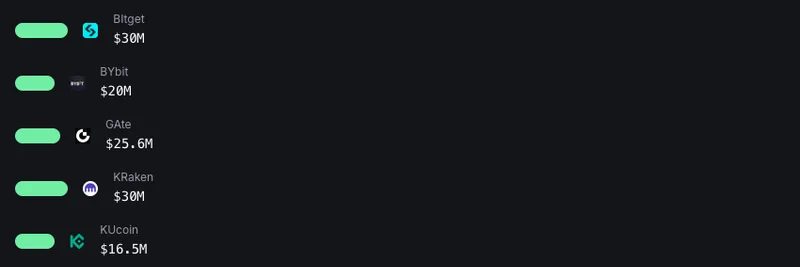Hey there, fellow crypto explorers! If you've been scrolling through X lately, you might have caught this intriguing post from BSCNews: a full guide to $ICE Open Network, now known as Ice Open Network (ION). It's billed as the only comprehensive deep dive you need this year into all things @ice_blockchain. As someone who's spent years diving into blockchain stories at CoinDesk, I couldn't resist breaking this down for you here at Meme Insider. We're all about meme tokens and the wild world of crypto, and while ION has evolved beyond pure meme status, its roots in community-driven mining make it a fascinating case study for how hype can build real tech.
Let's unpack what ION is all about. Think of it as a fresh take on blockchain basics – a layer-1 network that's independent, handling its own transactions without relying on giants like Ethereum. Launched in January 2025, ION is laser-focused on making blockchain accessible for everyone, aiming to bring 5.5 billion people on-chain. That's ambitious, right? With over 40 million users already, it's not just talk.
What Makes Ice Open Network Stand Out?
At its core, ION tackles the big headaches of older blockchains: slow speeds, high fees, and centralization risks. It's built on three main pillars – killer throughput for handling tons of transactions quickly, resistance to censorship so no one can shut down your data, and scalable setup that grows without breaking a sweat.
Here's a quick rundown of its standout features, explained simply:
ION ID: Your Decentralized Digital Passport
This is like your secure ID for the blockchain world. It lets you interact with dApps (decentralized apps that run on the network, not some company's server) without handing over your personal info. It's all about privacy and control – no more Big Tech peeking into your data.ION Connect: Social Media, But Decentralized
Tired of platforms controlling what you see? ION Connect flips the script, giving users power over content. It fights censorship and fake narratives by letting communities decide what's shared. In a world full of meme wars, this could be a game-changer for crypto discussions.ION Liberty: Secure Content Delivery
Acting as a decentralized proxy and CDN (content delivery network), this ensures you can access stuff without interruptions. It's perfect for regions with heavy internet restrictions, keeping your browsing private and authentic.ION Vault: Bulletproof Storage
Store your files across the network with top-notch security, including quantum-resistant encryption (fancy tech that even future supercomputers can't crack). You hold the keys, so no hacks like those cloud storage nightmares.
And then there's Online+, ION's star dApp in beta. It's a one-stop shop with encrypted chats, a built-in wallet for managing your crypto, and easy dApp discovery. Recent updates have made it snappier, with better chat features and scalable backends. It's partnering with projects like TN Vault for DeFi (decentralized finance, think lending and trading without banks), SoonChain for AI and gaming, and GraphLinq for no-code tools – meaning you can build apps without being a programmer.
How Does ION Actually Work?
Technically, ION is a layer-1 blockchain that plays nice with others. It interoperates with Ethereum, Solana, and BNB Chain, so you can bridge assets (move them between networks) seamlessly. Developers get handy toolkits to build on it, and there's even a startup program supporting everything from memecoins to security tools. Transactions are cheap and fast, thanks to validators – folks who stake tokens to keep the network honest and earn rewards.
Tokenomics: The Economics Behind $ION
Tokenomics is basically the rulebook for how a crypto token works – supply, distribution, and uses. ION made a big switch in May 2025, migrating from $ICE to $ION for better branding. If you held $ICE on BNB Chain, you could bridge it over easily.
Key stats as of mid-2025:
- Total Supply: 21.15 billion $ION
- Circulating Supply: About 6.61 billion
- Utility: Pays for fees (super low or even gasless), governance votes in the ION DAO (community-run decisions), staking for rewards, and powering dApps.
It's deflationary too – network activity burns tokens, potentially making them scarcer and more valuable over time. Allocation breaks down like this:
- 28% for community mining (earn by participating via apps)
- 25% for the team
- 15% for DAO
- And the rest split among rewards, treasury, and ecosystem growth.
That team chunk has sparked some chatter in the community, but the focus on mining and burns keeps things user-friendly. Oh, and each $ION breaks into a billion "iceflakes" for tiny transactions – handy for micro-payments in memes or games.
The Growing Ecosystem and Partnerships
ION isn't just tech; it's a whole world. With dApps blending social and finance (SocialFi), DeFi integrations, and support for AI/gaming startups, it's buzzing. Over 200 validators stake more than 15% of the supply, showing strong community backing.
Big partnerships include TN Vault, SoonChain, and GraphLinq. Plus, MMA legend Khabib Nurmagomedov as ambassador? That's mainstream appeal. Founder Alexandru Iulian Florea (aka Zeus) is steering the ship toward more innovations.
What's Next for ION?
While the full roadmap isn't super detailed publicly, key wins include the mainnet launch and validator growth. Look out for the no-code dApp framework dropping in 2025, which could explode user-created content – imagine meme tokens launching effortlessly.
In the meme token space, ION's mobile mining roots echo early hype projects, but it's maturing into a serious platform. If you're into blockchain evolution, this is one to watch. For the original deep dive, check out BSCNews' guide.
Stay tuned to Meme Insider for more on how projects like ION are blending meme energy with real utility. What's your take on ION – hype or the future? Drop your thoughts below!




